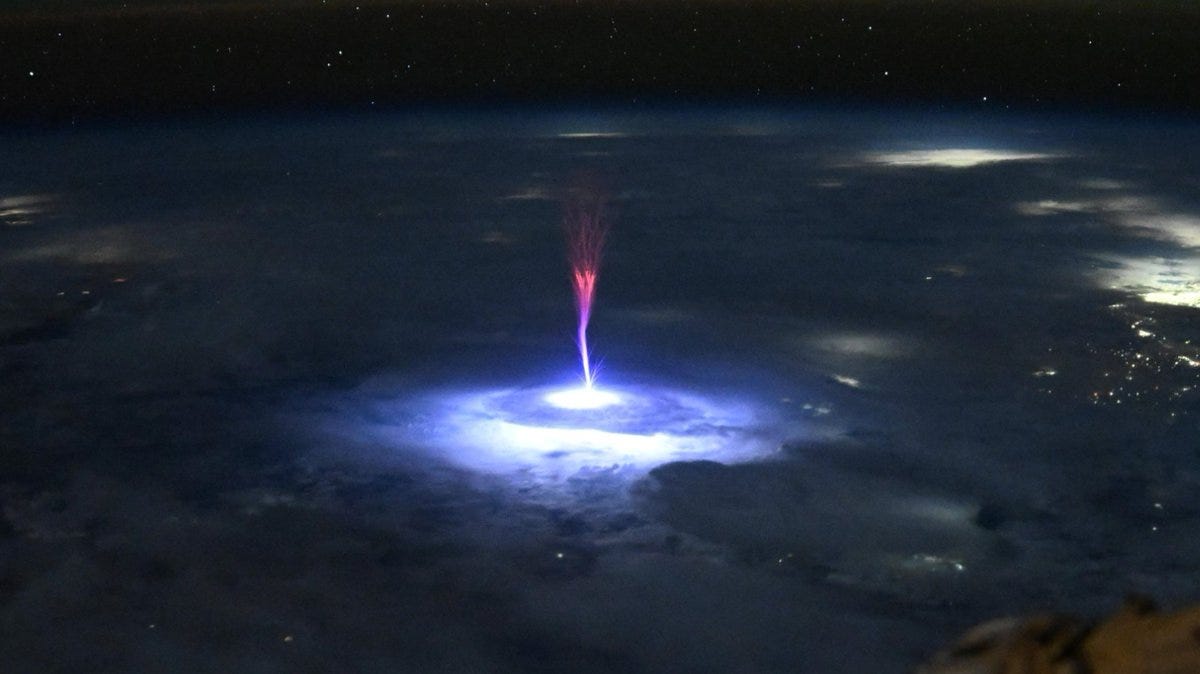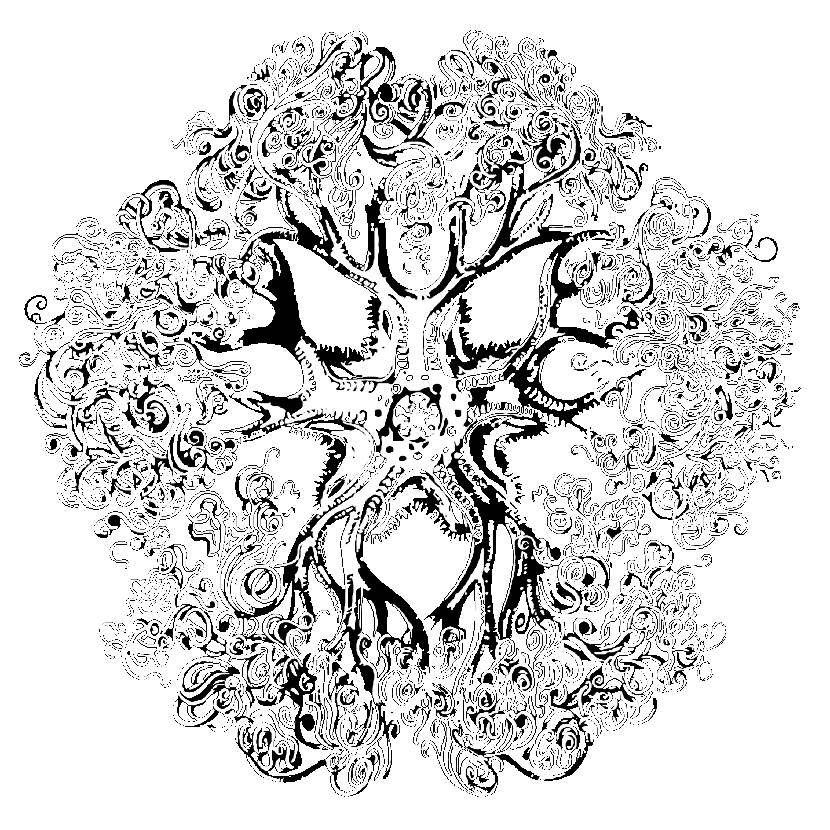“But I shall take you to Mars, body.” He addressed himself. “Leaving old sins here. And on to Mars to find new sins?” A delightful thought almost. Sins no one had ever thought of.
Ray Bradbury, The Fire Balloons

In early 1969, the Apollo program's promise to put man on the moon was in full swing. A few months prior, Apollo 7 had successfully completed the program's first crewed flight in outer space, and the crew of Apollo 8 had completed ten orbits around the moon. Now, it was on the 3-man crew of Apollo 9 to complete the next step in the mission: a test of the lunar module, and the first “spacewalk” in American history to test the new life support systems. The man for the dirty work was Russell “Rusty” Schweickart, a New Jersey farmboy and boyscout turned MIT aeronautical engineer. His family lived on the modern equivalent of less than $25,000 a year, but now, he had been strapped to a billion-dollar rocket, fired into space, and was tasked to float above our planet.
In the typical fashion of the Apollo program, the method for the EVA was crude, but effective. Fitted into the still-unproven life support system, Rusty had his boots strapped to a metal plate, the “porch” of the lunar module that would later take Armstrong and Aldrin to the surface of the moon, and off he went. Due to some malfunctions with cameras and other technical minutiae of the mission, Rusty was paused and left to himself for 5 minutes while the crew worked on a fix. All he could do during those few minutes was stare, directly ahead, at the massive blue sphere in front of him.
Now, Rusty was evidently agnostic, stating he had “no religious preference” during selection, and he was a premier scientist—one of the best the Western world had to offer. But these 5 minutes of meditation was, for him, a truly metaphysical experience. He would reflect years later on it, stating simply, “I am not the same man. None of us are.” In a piece titled No Frames, No Boundaries, he elaborated further:
And a little later on, your friend goes out to the moon. And now he looks back and he sees the Earth not as something big, where he can see the beautiful details, but now he sees the Earth as a small thing out there. And the contrast between that bright blue and white Christmas tree ornament and the black sky, that infinite universe, really comes through, and the size of it, the significance of it. It is so small and so fragile and such a precious little spot in the universe that you can block it out with your thumb. And you realize that on that small spot, that little blue and white thing, is everything that means anything to you – all love, tears, joy, games, all of it on that little spot out there that you can cover with your thumb. And you realize from that perspective that you’ve changed, that there’s something new there, that the relationship is no longer what it was.
…And you think about what you’re experiencing and why. Do you deserve this? Have you earned this in some way? Are you separated out to be touched by God, to have some special experience that others cannot have? And you know the answer to that is no.
As Rusty had indicated, he was not the only astronaut to have such an experience. The most well-known example comes from Edgar Mitchell of Apollo 14, who spent 6 hours on the moon. Due to his own epiphany, he later founded the Institute of Noetic Sciences, which as the name implies, sought to bridge the gap between scientific materialism and consciousness. His epiphany occurred on his way back to Earth, feeling what he described as “oneness”:
I had completed my major task for going to the moon and was on my way home and was observing the heavens and the earth from this distance, observing the passing of the heavens. As we were rotated, I saw the earth, the sun, the moon, and a 360 degree panorama of the heavens. The magnificence of all of this was this trigger in my visioning. In the ancient Sanskrit, it’s called Samadhi. It means that you see things with your senses the way they are – you experience them viscerally and internally as a unity and a oneness accompanied by ecstasy.
This experience would later be summarized and characterized by “space philosopher” Frank White, under what he coined “the overview effect”. The effect is what psychologists call a “cognitive shift”, caused by "a state of awe with self-transcendent qualities, precipitated by a particularly striking visual stimulus". Indeed, one way for astronauts to cope with long stints in orbit is “Earth-gazing”, simply looking out to the planet, and thinking. It is the beauty, sense of belonging, and a perspective of Earth's fragility that is often credited as characters of this experience. Virtually every film or artwork pertaining to the theme of early space exploration seeks to emulate this sensation: a nervous countdown, the violent shaking and thrust of the engines, lightening in intensity slowly, then suddenly—peace, and silence. The astronauts peer out of the windows and sit in a likewise silent awe at their home.
These explanations, as well as the sentiments of the astronauts themselves, undeniably have an element of Eastern mysticism to them—par for the course that was the cultural wave of the 60s and 70s. It is difficult to see all of mankind and, perhaps, all of life before you, and not experience a sense of “oneness”. Everything you have known is before you: your home, your ancestors, and your children. This fact is not just for you, of a so lucky few to witness it, but for all of mankind. All that is lacking is a 22,236-mile-high perspective.
What remains underexplored, in contrast, is what happens when we put our backs on Earth and face the vastness of the unknown. No longer can he see his home, the comfort of its blue oceans, or the birthplace of his Lord: before him is the unknown, the unhuman… monsters, specters, and gods. Not only do we have astonishingly little sense of what could be out there, it seems to be a limit of the laws of physics that we never will have a complete sense of it. As we fulfill our destiny among the stars, sending our tendrils out across the galaxy… as Earth becomes increasingly distant, smaller, gone… what will become of our religious sensibilities? Like everything else, they started, and belong, on Earth.
A number of distinct possibilities, and any combination of them, are at hand. Maybe we meet sentient life, and find out that, curiously, they too are wearing crucifixes. Perhaps we wage holy wars of conquest and conversion in an alien land, just as we had on Earth a number of times. Perhaps it is just us and empty rocks, and it is life itself that we evangelize. But what of us? A final possibility, which I find the most plausible as time goes on, is that the strange, unfamiliar, nonhuman, and existential nature of outer space produces something approaching a “new” religious system. This, too, had happened once before. In fact, it happened when mankind first became religious at all.
To make commentary on what religion would look like in a new environment, we must first assess what our natural, human inclinations are in regards to this matter. I return to a key component of the overview effect: awe, precipitated by stunning sensations. While White had the glimmering blue dome reflecting from an astronaut's visor in mind, this was, in fact, the pretenses for religiosity during mankind's formation of what we could call “religion”. It is from these intense “momentary experiences” from which gods appear.
Hermann Usener, a 19th century philologist, comparative mythologist, and teacher of Nietzsche, put forth this idea in his 1896 Götternamen, or The Names of Gods. He asked, why is it that the gods of antiquity were almost universally “named” after the region of being they were associated with? For example, Zeus evolved from “Dyeus Phter”, literally “the sky father”. Thor, similarly, traces back to “Perkwunos”, or “the striker” (as a side note, the Latin for “oak”—Quercus—traces to a familiar “perkus”). The explanation for this was rather simple, these “associations” were not merely that, but in some way, initially seen as the gods themselves. As time went on, these Augenblicksgötter—gods of the moment—were remembered, mythologized, and deified in increasingly complex fashion. The end result is the gods of antiquity—Thor, Apollo, and Ishtar—but the true origin of these gods is subtly different than how the myths “reveal” them to us. Ritual and religious experience, therefore, seeks to recapitulate this moment for the practitioner, for experiencing the moment is experiencing the god. While this framing may seem technical, one needs only to have a close call with a bolt of lightning, or behold a golden sun rising over morning dew, to have a sense of this phenomenon. The awe is there, and then it is a memory, and a yearning to see it again. So frequently, so dangerously, do we “challenge” God to show his powers to us.
I bring all of this up for a specific reason, that the prospect of man’s presence among the stars poses serious questions for paganism, as it does for any other religion. All of our myths, gods, and accounts are of the Earth, and inextricably tied to it. As we are continuing to reach further out towards this end of colonizing the Last Frontier, so are we attempting to revive a faith precisely as it was during the Bronze and Iron Age. What good is a sky god when you’re thousands of miles above the atmosphere? Why consider a sea god when there is no sea, and only void? Surely, Helios isn’t going anywhere anytime soon, but what shall we say once we enter the nearby trinary star system of Alpha Centauri? We will certainly face death out there, but our bodies will be shot out of an airlock as often as they are buried under alien soil. What exactly is “the underworld” here, and what are its qualities?
The solution is obvious, however uncomfortable, and so I ask for courage. I ask for courage for new gods, or certainly, at least substantial modifications to the ones we have now. This is not a novel concept, but precisely how the gods that we know today came about and indeed changed over time in the first place. They are tied to a specific region of being, and if that region is not present, nor is the god. A sky god is just as inconceivable to a star-born people as it is to a hypothetically subterranean one. As our ancestors marched and trekked into new lands, they brought with them old gods, but they discovered new ones. The essential quality of animism is that the immediate surroundings of one’s world is, in that moment, indeed animated, not necessarily that ghostly beings follow one like a poltergeist wherever he goes. New lands necessitate new gods, and the prospect of man colonizing stars lightyears away from the Sun is the most extreme, yet most immediate, confrontation with this fact.
I must stress that this is not an advocacy for “making something up”, or a sense of “do what thou will”. Gods are not subliminal, psycho-illusory archetypes found on tarot cards, nor is a devotion towards them and rituals to acquire their favor an act of “belief in believing”. Like the lightning bolt and harvest, fertility and death, law and frenzy, these are real regions of beings, which shape us and our lives in direct, material ways. This is merely a consideration that not all of these regions will follow us wherever we go, nor have they necessarily in the past.
An important consideration for the ongoing project involving a “reconstruction” of paganism: there is a difference between paganism, the worldview and religious system, and the religio of specific peoples and pantheons. Reviving the religio of, say, the ancient Germanics can only get one so far—as it assumes that contrary to the wisdom of Heraclitus, we are the same people, and it the same world. There are plenty of similarities, we are indeed their posterity, but our world and how we understand it could not be plausibly more alien than what the Germanics experienced. The aim of reconstructive efforts should not be to revive a particular pantheon, but to reconstruct the worldview of paganism: its animism, its openness to being, and its acceptance of the world for what it is. Otherwise, we are setting ourselves up for failure, and ironically in contrast to the worldview that allowed these pantheons to be created in the first place. Whether it is new gods or familiar ones that reveal themselves to us, all should be open to either possibility:
That gods, strange gods, come forth from the forest into the clearing of my known self, and then go back. That I must have the courage to let them come and go.
D.H. Lawrence, Studies in Classic American Literature
Outer space will be at times horrifying, others mystifying and awe-striking, and often both at the same time. We have not even begun to have left, all we have are pictures and simulations of distant black holes and nebulae, and we are already confronted with this sense. Who knows what awaits us? We can know one thing for certain, something ancient tradition has maintained since the days of the first men: where there is a region of being, there is a god. Whatever they may be, a Poseidon of the void who keeps the wormholes and stellar routes calm, a hungry, all-devouring black hole named Chronos, or entirely unknown gods who feed on our actions from unreachable dimensions—we will call out to them as Man, and await an answer.
The first ritual performed by mankind in outer space was, in fact, the communion of the blood and body of Christ, performed by Buzz Aldrin on the surface of the moon, as he and Armstrong awaited a greenlight to exit the lunar module. Evidently, we have no issue taking our Earthly sensibilities with us into the frontier, just as our ancestors had done prior. So too on the Apollo missions came Western man’s yearning for the great beyond, his relentless scientism, and his Faustian hunger—it was this that brought him here in the first place. But as time goes by… as that blue dot becomes smaller and less significant, as we are confronted with new, strange gods, and as we are forced to reckon with our existence in an infinite realm with little care or awareness of it… things will change. We cannot know what we will be in 10,000 years. We cannot possibly know what is out there. But we can reasonably predict that it will be substantially different than what we are accustomed to here. From there, a change in religious beliefs and values is certain.
Yet known gods await. Plus Ultra.








Yeah, this topic is very touchy for many pagans. I know some pagans who already thinks the stars and planets fall into specific domains governed by our Gods. They cite various sources to prove this, usually including the Nebra Sky Disc for example so you can see how dubious I take their claims.
However, I personally agree with you. To give a similar albiet more earthly analogue, we have Columbia, the fruitful lady we associated with this cornucopic land and our purpose here as colonists manifesting our destiny. She deserves to be honored more often. I know some pagans who have done blots to her. In a way, she is like our Danu, a goddess we name the land after. There are many places named after Columbia, and she deserves to be recognized by Americans, IMO.
This would be seen as "making shit up" by many people. I find it consistent with my religion though.
I imagine the New Gods will be shaped primarily by the mode of transport we use to traverse the stars.
If we’re put into cryo-sleep until we reach our destination, there might not be any new Gods until after we’ve settled a new planet for a few generations.
If zygotes are frozen, then thawed and allowed to gestate 18 years and 9 months before arrival, the Gods may be imagined as stewards or mothers.
If we reach our destinations in mere minutes via warp drive, the ruler of the New Gods may be “Alcubierre” instead of Zeus
Etc etc.
Very fascinating to think about. I also wonder what species we’ll evolve into as we settle different planets, and if spacejews will force Martians to open their borders to Veniggers and Merxicans?